The Selous Game Reserve is a protected area in southern Tanzania. It was designated a UNESCO World Heritage Site in 1982 due to its wildlife diversity and undisturbed nature. It might not have the name recognition of Kruger, but Selous is quite worthy of a visit. Here are five fascinating facts about the Tanzanian reserve:
It’s Huge
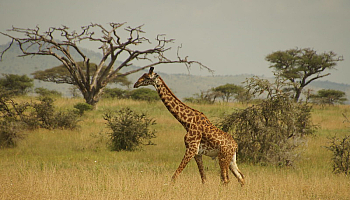 Established in 1922, The Selous Game Reserve is the largest protected game reserve on the African continent, covering an area of 54,600 square kilometers comprised of a vast wilderness with forests, grassy plains, mountains, and open woodlands.
Established in 1922, The Selous Game Reserve is the largest protected game reserve on the African continent, covering an area of 54,600 square kilometers comprised of a vast wilderness with forests, grassy plains, mountains, and open woodlands.
That’s bigger than many other game reserves, including the neighboring Serengeti National Park or South Africa’s Kruger National Park. In fact, it’s bigger than some countries, including Switzerland, Denmark, and Bhutan.
It’s Seldom Crowded
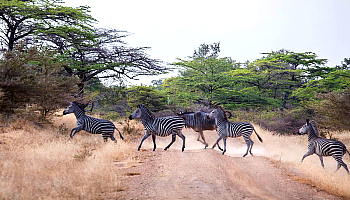 The reserve is located in the southern part of Tanzania along the southern Tanzania safari circuit and offers the best escape from the large tourist crowds in the northern safari destinations like Serengeti while offering you a remarkable wildlife experience. It is considered to be among the hidden gems in the county and offers a wide range of Selous Game Reserve Camps for accommodation.
The reserve is located in the southern part of Tanzania along the southern Tanzania safari circuit and offers the best escape from the large tourist crowds in the northern safari destinations like Serengeti while offering you a remarkable wildlife experience. It is considered to be among the hidden gems in the county and offers a wide range of Selous Game Reserve Camps for accommodation.
Its hidden-gem feel likely has to do with the restrictions placed on visitors, too; only the northern Selous, above the Rufiji river (about 8% of its total area), is open to tourists.
Get Up Close
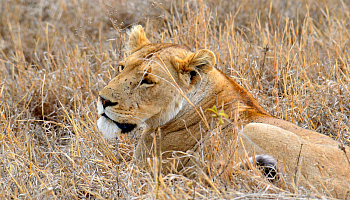 Visitors to Selous can experience a wider range of activities than they would at the more famous Serengeti National Park, for example. However, a safari in the Selous cannot be considered unless you partake in a guided tour that will ensure visitors get an up-close encounter in this remote but beautiful reserve.
Visitors to Selous can experience a wider range of activities than they would at the more famous Serengeti National Park, for example. However, a safari in the Selous cannot be considered unless you partake in a guided tour that will ensure visitors get an up-close encounter in this remote but beautiful reserve.
Game drives are conducted early in the morning as well as in the late afternoon and these are normally conducted in open-roof safari cars to offer tourists the most rewarding views of the animals. The park ranger guides are very knowledgeable about the best places to see animals and will lead you to those places. Boat safaris offer guests an opportunity to explore the different water channels, including lakes, River Rufiji, and the smaller channels for various wildlife, including hippos, birds, and crocodiles.
Score Standout Safari Photos
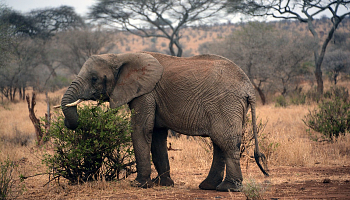 The vast area of Selous contains several varied ecosystems, and Unesco estimates there are upwards of 2,000 plant species represented in the park. As for animals in the reserve, there are approximately 145,000 buffalos, 4,000 lions, 100,000 wildebeests, large hands of giraffes, 35000 zebras, 40000 hippos, 250,000 impalas, large numbers of Lichtenstein’s hartebeests, waterbucks, elands, and bushbucks, in addition to leopards, crocodiles, and hyenas. Furthermore, this is among the few wildlife sanctuaries on the African continent where you will find the puku antelopes, the African wild dogs, as well as the sable antelope. Previously, the Selous was home to a very large number of elephants but due to excessive poaching, numbers have decreased.
The vast area of Selous contains several varied ecosystems, and Unesco estimates there are upwards of 2,000 plant species represented in the park. As for animals in the reserve, there are approximately 145,000 buffalos, 4,000 lions, 100,000 wildebeests, large hands of giraffes, 35000 zebras, 40000 hippos, 250,000 impalas, large numbers of Lichtenstein’s hartebeests, waterbucks, elands, and bushbucks, in addition to leopards, crocodiles, and hyenas. Furthermore, this is among the few wildlife sanctuaries on the African continent where you will find the puku antelopes, the African wild dogs, as well as the sable antelope. Previously, the Selous was home to a very large number of elephants but due to excessive poaching, numbers have decreased.
According to its tourism board, Tanzania has more wild animals per square kilometer than any other country in Africa, thanks in no small part to Selous. As a matter of fact, the giraffe population in Selous has become so large that the reserve has earned the nickname: “Giraffic Park.”
It’s Pronounced “Seloo”
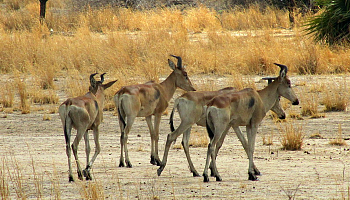 That’s how the park’s namesake, Frederick Courteney Selous, pronounced his name. Selous was a British adventurer, hunter, and conservationist who explored south-central Africa for decades, becoming so well-known that author R. Rider Haggard used him as inspiration for his famous protagonist, Allan Quatermain. Selous was killed near Beho Beho camp by a German sniper in 1917 and was buried nearby.
That’s how the park’s namesake, Frederick Courteney Selous, pronounced his name. Selous was a British adventurer, hunter, and conservationist who explored south-central Africa for decades, becoming so well-known that author R. Rider Haggard used him as inspiration for his famous protagonist, Allan Quatermain. Selous was killed near Beho Beho camp by a German sniper in 1917 and was buried nearby.
Five years later, British colonists combined several existing game reserves into one super-sized one, naming it after their countryman.
To see travel information, safari packages, and up-to-date pricing, visit the Selous Game Reserve website HERE.
Source: Selous Game Reserve and Stacy Lee Kong / G Adventures with permission
Photos courtesy of Selous Game Reserve


